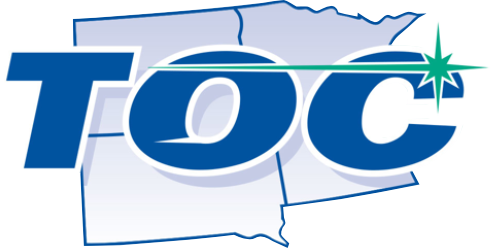Your Rights
Approved's Research On Your Rights, and On Your Environment
Your Rights
Magnuson-Moss Warranty Act & the Sherman Antitrust Act
Occasionally, we hear reports that an OEM sales representative has told a customer that the use of 3rd party optics, cables, or memory in the manufacturer's system voids the warranty. Sales representatives use this method in an attempt to coerce customers into purchasing products exclusively from the system manufacturer, usually at prices much higher than ours. A system manufacturer may resort to this type of warranty threat to spread doubt in the minds of consumers rather than to compete based on quality and price.
In legal terms, this type of ploy is referred to as a "tie-in sales provision." In general, such provisions are illegal. They are specifically prohibited in the consumer market by section 102(c) of the Magnuson-Moss Warranty Act of 1975 (15 United States Code section 2302(c)). In the networking and server markets, such ploys violate sections 1 and 2 of the Sherman Antitrust Act (15 United States Code sections 1 and 2). As the United States Supreme Court has stated:
"The essential characteristic of an invalid tying arrangement lies in the seller's exploitation of its control over the tying product [here, the networking/computer system] to force the buyer into the purchase of a tied product [here, the optic sold by the system manufacturer] that the buyer either did not want at all, or might have preferred to purchase elsewhere on different terms. When such 'forcing' is present, competition on the merits in the market for the [optic module] is restrained and the Sherman Act is violated." Jefferson Parish Hospital District No. 2 v. Hyde, 466 U.S. 2 (1984)
Companies and individuals that violate the antitrust laws are subject to a wide range of sanctions, including having triple damages imposed against them. The important point is that, regardless of their legality, these types of sales ploys are intended to intimidate and pressure unsophisticated purchasers into spending substantially more than they should for memory upgrades.
At Approved Networks, we strongly support customer choice and believe that consumers should be free to purchase compatible products without being subject to threats and misinformation. Throughout our existence, Approved has made reliability our first priority. Our transceivers are designed to meet the specific requirements of the system or class of systems into which the transceiver will be installed. Our networking products are 100% tested for reliability and compatibility. In line with these principals, all our products are backed by limited lifetime warranty and free technical support.
Your Environment
Cisco, Juniper, Avaya, Huawei, and others dismiss 3rd party optics programs as a warranty risk. Until end-user operations managers and engineers understand how easily this program can be managed, the OEMs may be able to effectively discourage the use of more affordable 3rd party optics.
Operationally Handling a 3rd Party Program
There are a few facts that must be understood regarding the simple methodology of managing a 3rd party optics program:
- Quality 3rd party optics rarely fail. Failure rates for Approved Networks are lower than the OEM-branded optics.
- A failed optic means an empty port, not a failed network. An optic performs a function that is defined. It is not highly variable nor "smart". If the optic malfunctions, the port is temporarily useless until the transceiver is replaced.
- Operationally, there is no difference between management of a 3rd party optics program and an Original Branded Optics program. The troubleshooting action is exactly the same for both. That is, if a transceiver malfunctions, it must be replaced.
If a Cisco, Juniper, HP, or Avaya optic fails in the field, port integrity fails, then the optic must be replaced. A larger end user with failsafe measures will usually install a spare transceiver which allows the port to function properly, fixing the problem. Regardless of whether the transceiver is from a 3rd Party or an OEM, the risk of malfunction is limited to the port, and the solution is a simple part replacement. Because of this, the only risk in a 3rd party optics program is the failure or malfunction of the optic. If it is found that a failure has occurred, the OEM cannot cite the use of 3rd party optics as a reason to void the warranty - Magnuson Moss Act 1975/Sherman Antitrust Act. Essentially, the quick and simple operational cure for a failed 3rd party optic makes it impossible for an OEM to enforce purchasing their branded optics within the context of the law.
If a failure of a 3rd party optic occurs (which is very uncommon), our larger customers have usually purchased a hot spare, which they make available on-site to quickly fix the port issue. A hot spare program in a 3rd party optics environment is a negligible cost compared to purchasing the original at three times the cost. The cost difference, even when keeping 3rd party spares available, is significantly lower. We do have smaller customers who do not choose to buy spares because optics rarely fail. If an optic fails in this case, we simply ship overnight or cross-ship for replacement immediately.
